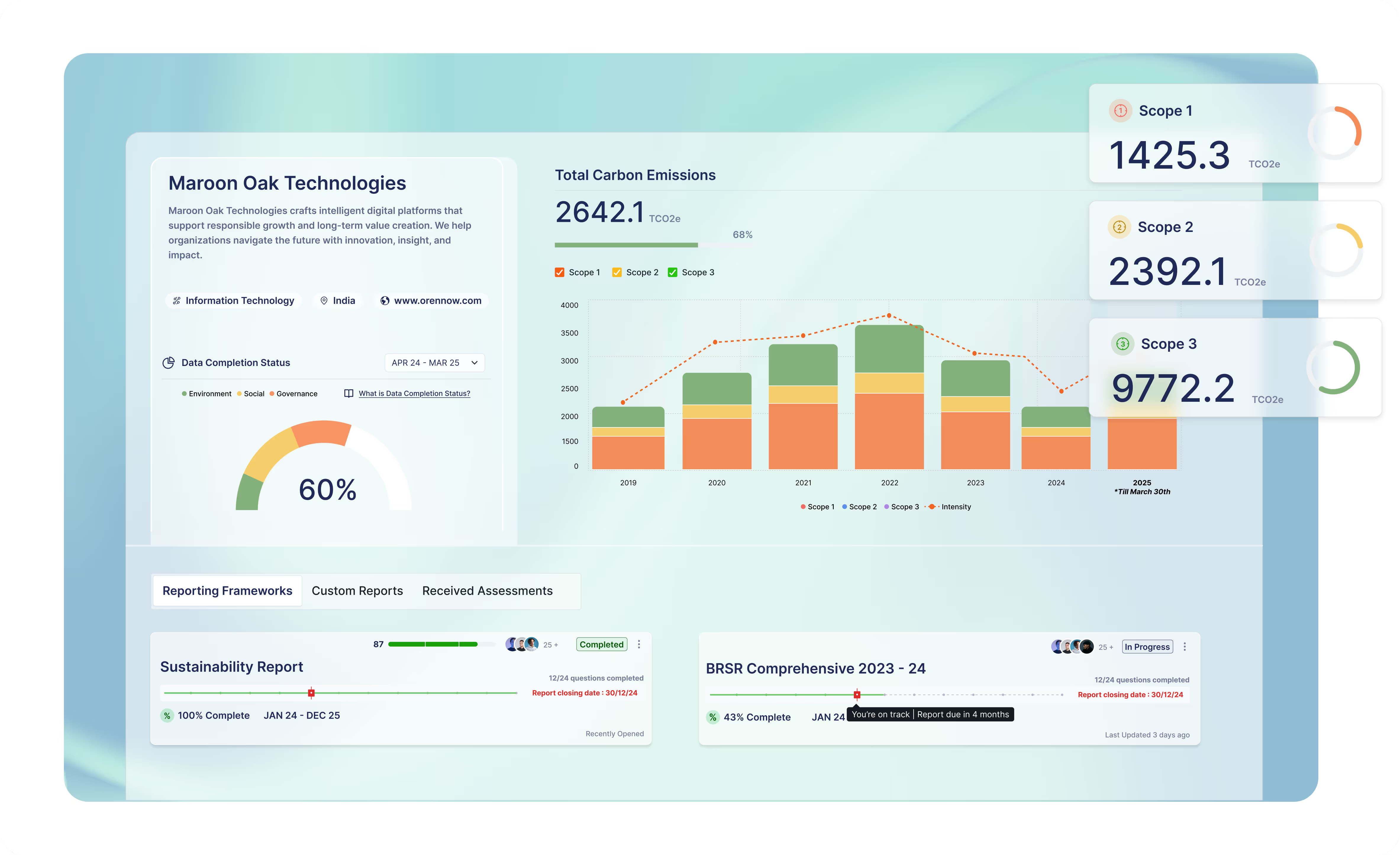SEBI’s Latest Update: Reporting Green Credits Under BRSR Framework

In a landmark move for India’s sustainability landscape, the Securities and Exchange Board of India (SEBI) has integrated the Green Credit disclosure into its Business Responsibility and Sustainability Reporting (BRSR) framework, effective from FY 2024–25. This strategic update positions India at the forefront of linking voluntary environmental actions with mandatory ESG disclosures. At Oren, we interpret this as a transformational opportunity for corporates to not only comply with regulatory expectations but also drive long-term value by internalising environmental initiatives.
Understanding the Green Credit Program (GCP)
1. Overview and Objectives
The Green Credit Program, launched by the Ministry of Environment, Forest and Climate Change (MoEFCC) in December 2023, aims to establish a market-based mechanism that quantifies and monetises positive environmental actions. It aligns with the national mission of Lifestyle for Environment (LiFE) and is designed to incentivise voluntary participation across stakeholders.
2. Eligible Activities
The initial categories under GCP include:
- Tree Plantation and Eco-Restoration: Restoration of degraded lands through verified afforestation.
- Water Management: Conservation, harvesting, wastewater treatment, and improved efficiency.
- Sustainable Agriculture: Soil enrichment, regenerative farming, and land restoration.
- Waste Management: Enabling circular economy practices.
- Air Pollution Reduction: Initiatives reducing particulate matter and emissions.
- Mangrove Conservation: Preservation and reforestation of mangrove ecosystems.
- Eco-Labeling: Certification of environmentally friendly products.
- Green Infrastructure: Construction of energy- and resource-efficient buildings.
3. Market Mechanism and Tradability
Each verified action generates a green credit, a unit representing measurable environmental impact. These credits are:
- Tradable on a forthcoming domestic platform
- Transferable between entities
- Potentially usable to meet compliance obligations (e.g., afforestation norms)
In the pilot phase, the Indian Council of Forestry Research and Education (ICFRE) administers tree plantation projects. One grown tree meeting density and maintenance requirements equals one green credit.
SEBI’s Revised BRSR Framework: Integration of Green Credit
1. Context and Alignment with Principle 6
SEBI's updated BRSR guidelines now explicitly include green credit-related disclosures under Principle 6: Businesses should respect and make efforts to protect and restore the environment. This change institutionalises the GCP within the formal ESG disclosure system.
2. Specific Disclosure Requirements
Starting FY 2024–25, listed entities must report:
- Green Credits Generated: Total number of credits generated by the entity.
- Green Credits Procured: Credits purchased from third parties.
- Green Credits by Top 10 Value Chain Partners (based on value of transactions):
- Number generated
- Number procured
3. Definition and Scope of Value Chain Partners
SEBI redefines value chain partners as those:
- Contributing ≥2% of total purchases or sales by value
- Optional scope coverage of up to 75% of total value chain
Companies disclosing value chain-related ESG data must also report the percentage of total sales and purchases represented.
Strategic Implications for Corporates
1. ESG Integration and Market Differentiation
Embedding green credits into ESG strategy enables:
- Enhanced climate risk disclosures, especially in relation to physical and transition risks, by showcasing measurable adaptation and mitigation efforts.
- Improved investor perception and ESG ratings, as capital providers increasingly look for credible, quantifiable actions that demonstrate alignment with net-zero and biodiversity-positive goals.
- Demonstrable environmental impact accounting, allowing companies to move beyond narrative CSR reporting toward verifiable performance-based metrics.
- Ability to integrate green credits into integrated reporting frameworks such as GRI, SASB, and TCFD-aligned disclosures, enhancing cross-functional alignment across sustainability, finance, and risk teams.
2. Stakeholder and Value Chain Engagement
The requirement to disclose value chain data promotes:
- Collaboration with suppliers and customers on sustainability programs, co-developing environmental goals and shared accountability mechanisms.
- Capacity building across the supply chain by encouraging SMEs and large suppliers alike to participate in GCP and adopt climate-resilient practices.
- Alignment with Scope 3 emissions tracking, enabling companies to improve life cycle assessments, reduce indirect emissions, and meet science-based targets.
- Opportunity to develop strategic partnerships with upstream/downstream partners for collective green credit generation, particularly in high-impact sectors such as agriculture, construction, and manufacturing.
3. Financial and Reputational Leverage
- Participation in GCP can unlock new asset classes (tradable green credits), laying the groundwork for future monetisation of ecological services and access to climate finance instruments.
- Companies proactively generating green credits may qualify as BRSR leadership indicators under Principle 6, enhancing visibility in ESG benchmarks and indices.
- Builds a positive reputational narrative by showcasing the company’s proactive role in national environmental goals and global sustainable development targets.
- Facilitates access to preferential financing and green bonds, as credible participation in GCP can demonstrate compliance-readiness and environmental due diligence to financial institutions.
Conclusion
SEBI's move signals a profound shift: voluntary environmental contributions are now reportable business assets. The Green Credit Program’s integration into BRSR sets a precedent for integrated climate action, positioning India as a leader in harmonising market mechanisms with sustainability disclosures.
At Oren, we believe this is not just about ticking regulatory boxes. It’s about transforming sustainability from a cost centre into a value driver, redefining the relationship between businesses and nature.
Latest Blog Posts
Dive into our blog for insights on making your organization more sustainable.
Sustainability Simplified
Wherever you are in your sustainability journey, we help you advance with confidence.
Schedule a Call



.avif)

